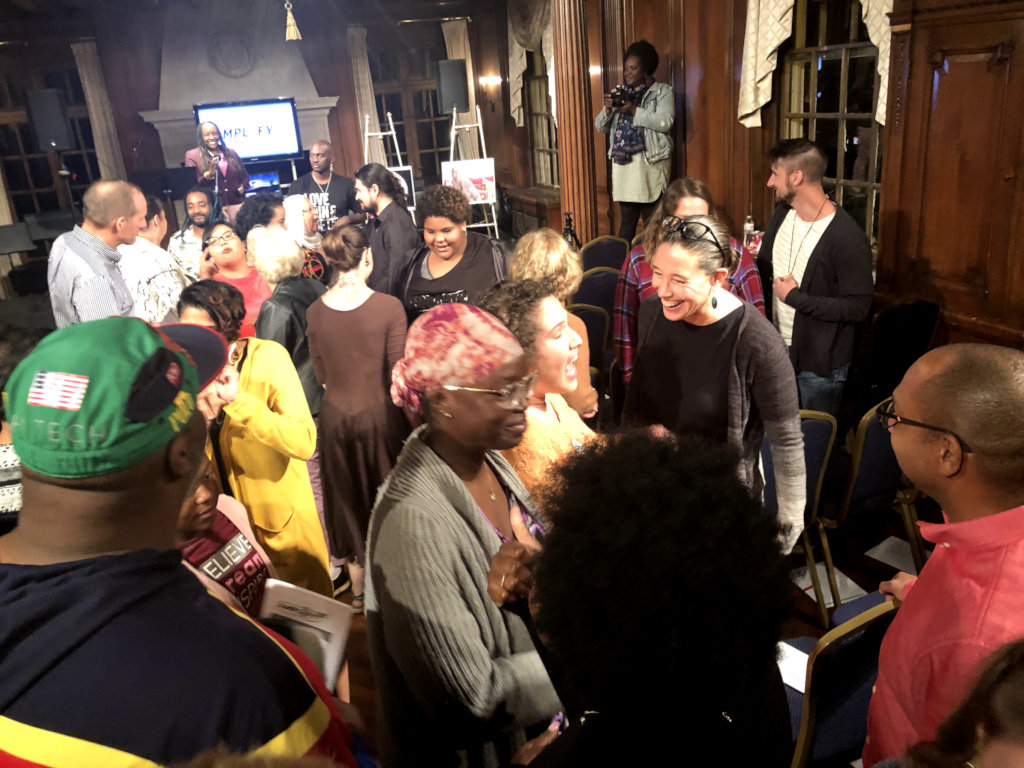By Tyler French, Innovation and Partnerships Director

At Story Tapestries we recognize the importance of literacy extends beyond academic achievement and engagement (although those are always vital pieces to the work we do!). Literacy also enables us to connect with each other and the world around us. It allows us to more accurately identify our feelings, describe what we are seeing in the world and express those to others. On the receiving end, by building literacy skills, students are better able to listen, to engage, determine meaning and motivation behind words. Your support of our literacy programs in schools not only supports students in their academic goals, but also help them more effectively participate in conversations that have real impact on their lives.
On October 5, 2019, a group of family, friends, new acquaintances, and strangers gathered at the Strathmore Mansion for our Amplify US! event. We were there to share in poetry, storytelling, and conversations about race, difference, and connection. In addition to professional poets, community members, and an excited audience, two youth performers who we have previously engaged in our programming lit up the stage with their poetry and storytelling.
It’s difficult to capture in words the feeling of the room. The conversations were not necessarily easy or without discomfort, but all were warm and caring. They felt urgent and necessary. Every person who showed up was meant to be there. People lingered longer than usual, already late for a Saturday evening. The performances and conversation created a kind of gravitational force and held us there. Primed by the performances, audience members leaped into conversation with each other, discussing aspects of their lives rarely shared with strangers. The conversations engaged intergenerational connections across race and nationality and the event spilled over its end time as audience members were reluctant to end their conversations.
Why this urgent need for dialogue?
In 2017 Montgomery County Police reported a 26% increase in bias incidents compared to the prior year (a link to the report is included below). Of the incidents reported, roughly half were motivated by bias toward religion and half were motivated by bias toward a race or ethnicity. Over that year, there was a 48% increase in the number of incidents in which a school or college was a target of a bias incident. Among known subjects of all bias incidents in 2017, the dominant offender group is males (44 of the 53 known subjects were males). Additionally, 33 of the 53 subjects were under the age of 18, a 267% increase over 2016.
As you can see from these statistics, the impact of these incidents is very much connected to our work in schools. Our literacy programs ensure more students are able to add their voices to the conversation, to not only effectively communicate the issues they see in their schools and communities, but also collaborate with others to dream up solutions. I would like to invite you to follow our programming and the conversations our students are adding their voices to by joining us on Facebook, or following along in our blog.

